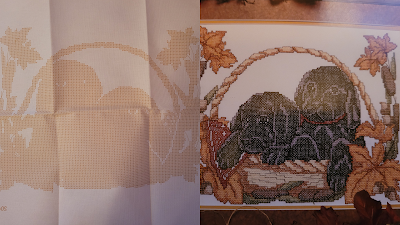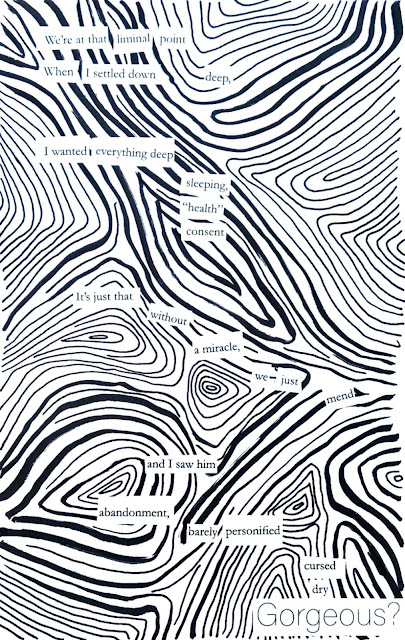By Valois J Vera Interviewer, Handy Uncapped Pen
"I am very ill. That would be the first and most obvious thing
to know. I have something of a haughty and self-important mo-
tivation for writing a memoir, being relatively young, as I have the persistent weight of illness stunting my time to speak. I need a model of myself—to have a promotion of my worth— and so here is no small attempt at a testament to my life and constitution. This work is a show of my growth, of what I love, and some diagnosis as to why I would love those particular things."
The introduction to Jake Goldsmith's
Neither Weak Nor Obtuse reveals a glimpse into the raw and genuine pages of this striking memoir. We certainly wanted to learn more about Jake and his book.
Handy Uncapped Pen: What inspired the idea for Neither Weak Nor Obtuse? Jake Goldsmith: I’m a memoirist, if I’m any sort of writer. I’m very weary and anxious about my life and health and I felt the (indulgent) need to hint at something of a last testament. It’s morbid, and I don’t think it means I will have nothing else to say, but I think the book does hint at fundamentally what my state of mind is as a chronically ill person—my thoughts, perceptions, how I have come to be, who I am.
HUP: Tell us about your writing process. JG: I normally write notes on an iPad, or paper that I then transfer to an iPad—on Pages or Word. It’s much easier for me than sitting at a computer or desk and I’d normally have some inspiration to write, say, just a paragraph on a particular subject—which I would then expand on or polish later. I rarely rewrite anything substantially but rather make additions or renovate what I’ve initially put down. It is liberating, though, to cut large swathes of text if I have something better. I don’t think my process is too interesting and I don’t have much good advice for anyone I know who wants to write; I write organically, at whatever time it comes to me, and without any real discipline. As my life, it affords something, means I don’t need to be so disciplined or regimented.
HUP: Tell us about your publication experience. JG: I originally self-published my book. I didn’t care too much about wider ramifications and just wanted something for my parents or friends to point at. It was too difficult to ask publishers anyway, out of embarrassment or just by being a stranger. When I later founded The Barbellion Prize, I was noticed by literary people, who are a closer knit community of people I was outside of, and that lent me a gateway to people with links to independent publishers. Before I would have to knock on the door of publishers as an unknown entity from the outside if I wanted anything, but if you know someone then it’s friendly. It’s unfair, in many ways; cynically it’s nepotism that means anyone can get anywhere—knowing people at the right time and place means a lot more than raw talent or expertise individually (if I have that). But I’m thankful to have made friends, first online, just by being noticed after creating The Barbellion Prize and allowing me some access into an alien literary world. I’d be aware of the literary world, of course, but it’s very much a selection of (often metropolitan) cliques and cultural niches most are not in.
Otherwise, my publisher has been very personable, personal, and entirely receptive of me. This would, I gather, be more difficult with a larger publisher—with its own obtuse marketing directives or other pursuits. I was seen for what I am and given the editorial help I needed, or anyone really needs. It may be a harder world to access if you’re not initiated, but it certainly has its necessary advantages. Purely as a framework for editors, anyone needs a good editor to be anything worth looking at—and that’s harder if you don’t have the means or you’re self-published. Most self-published works will be rougher simply because of the lack of good editing, clearly.
HUP: Looking back at both the writing and publication process, is there anything you would have done differently?
JG: Not particularly. I had regular calls with my editor to go through the text bit by bit and polish it (often while I was in hospital). It was a rewarding experience and I had no real trouble with it, and I’m grateful for it.
HUP: Will there be a sequel, or what projects are you working on now? JG: I may try to have some shorter articles published. I’m afraid of being one note. I’m strongest when writing this very blunt, frank, open confessional. I have a few thousand words of something that’s akin to Barbellion’s journal. It’s an apt comparison to me. It also rewards writing in short disjointed essays or paragraphs and could be published as a short journal or a collection in a magazine. I have a few brief essays published in the quarterly magazine
Exacting Clam, from my publisher Sagging Meniscus, about my experiences in hospital and with people's behaviour and thoughts regarding illness—more phenomenology of illness. I detail less of the basic physical facts of illness and more any thought or philosophical processes, which are more important to me. Coping with the facts of illness are more important to me than simply what those facts are—which are obvious or boring. I don’t need to write down, as much, what my hospital notes are. I need to think about what they implicate, what they mean exactly, what fate I then have and how I am going to reconcile or deal with those realities—if I even can. My emotional or philosophical reactions to my health are more important to detail than my BPM or oxygen saturation.
HUP: Tell us about the Disability narratives in your book. JG: The whole thing, any political thought, any perceptions I have, are from my reality as an ill person. Through the lens of illness. It’s the defining characteristic and I think it’s a lie, and insulting, unwitting or not, to say that illness or disability isn’t so utterly defining. It’s not shameful, it’s fine for disability to define what you can do and it will define how you think. I’m not sure how that’s escapable without lying about or underestimating what disability and illness is. I can’t be ashamed of it, of course it’s going to shape everything and I’m not sure how it couldn’t.
Otherwise, I talk of how healthier people don’t reflect on or comprehend disability, and illness as a means towards philosophical or psychological evaluation. I don’t portray disabled people as soothsayers, but rather more immediately faced with a reality to confront and think about—while others, self-admittedly, are more blithe about things.
HUP: As a Disabled Author, what is your perspective on Disability representation in literature?
JG: Many of our best historical writers were disabled, in some way. Academically or as laypeople we care not to notice this or appreciate it. We will either not know of it, or if we do we distance it from our daily lives.
Despite historical representation from the likes of Kierkegaard, Samuel Johnson, Emily Dickinson, or any other number of renowned and canon authors, modern publishing is limited in the number of openly disabled people it elects to publish—as much as other industries are also very impoverished when it comes to disability representation, or class representation, etc.
The Barbellion Prize is only a small effort to reward disabled authors (at least I say that, while others say it can be more), and to me it’s still unjust that disability isn’t perceived as a fundamental or primary subject, and we neglect disabled people in literature as much as we do in everyday life—even if we want to pretend we are more cultured and worldly in literature.
It’s common to quote Virginia Woolf, but she rightly expressed in her essay On Being Ill, “ . . . it becomes strange indeed that illness has not taken its place with love and battle and jealousy among the prime themes of literature."
It is indeed strange and insulting that this is still true.




